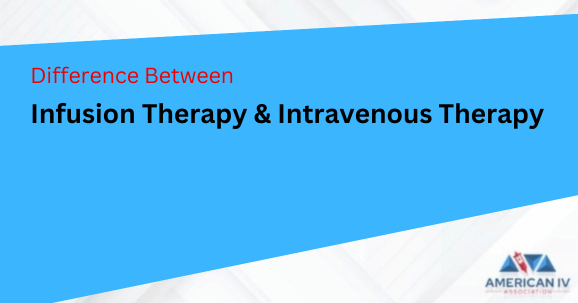When it comes to medical treatments, infusion therapy and intravenous therapy are two commonly used methods for delivering medications, fluids, and nutrients directly into the bloodstream. Although these terms are often used interchangeably, they have distinct meanings and applications. Understanding the differences between infusion therapy and intravenous therapy can help patients and healthcare providers make informed decisions regarding treatment options.
What is Infusion Therapy?
Infusion therapy refers to the administration of medication or fluids through a needle or catheter. It encompasses various delivery methods, including intravenous (IV), intramuscular (IM), and subcutaneous (SC) routes. This type of therapy is commonly used when oral medications are ineffective or not an option.
Types of Infusion Therapy
Infusion therapy includes different methods, depending on the patient’s condition and the type of medication administered. Some of the most common types include:
- Intravenous (IV) Therapy: The most widely recognized form of infusion therapy, IV therapy involves delivering medication directly into a vein.
- Intramuscular (IM) Injections: Medications are injected directly into a muscle, allowing for slower absorption into the bloodstream.
- Subcutaneous (SC) Injections: These injections are administered just under the skin and are commonly used for insulin or biologic drugs.
- Epidural Infusions: Used primarily for pain management, these infusions deliver medication into the space around the spinal cord.
Infusion therapy is typically used for conditions such as chronic infections, autoimmune disorders, chemotherapy, and hydration therapy.
What is Intravenous (IV) Therapy?
Intravenous therapy is a specific type of infusion therapy that involves delivering fluids, medications, or nutrients directly into a vein using an IV line. IV therapy is widely used in hospitals, clinics, and even in-home care settings.
Types of IV Therapy
There are several types of IV therapy, including:
- Peripheral IV Therapy: A short-term IV line inserted into a vein in the arm or hand.
- Central Venous Catheter (CVC): A long-term catheter inserted into a large vein, often in the chest or neck.
- Peripherally Inserted Central Catheter (PICC): A catheter inserted into a peripheral vein and guided to a central vein.
- Intravenous Push (IVP): A rapid injection of medication directly into the vein.
- Continuous IV Infusion: A steady flow of fluids or medications delivered over an extended period.
IV therapy is commonly used for hydration, pain management, antibiotics, chemotherapy, and emergency treatments.
Key Differences Between Infusion Therapy and Intravenous Therapy
While infusion therapy and IV therapy share similarities, their differences lie in their scope, application, and delivery methods.
1. Scope of Treatment
- Infusion Therapy: Broad term covering IV therapy, intramuscular injections, subcutaneous injections, and more.
- IV Therapy: A subset of infusion therapy, limited to the intravenous administration of fluids and medications.
2. Administration Methods
- Infusion Therapy: Can be administered through veins, muscles, under the skin, or epidurally.
- IV Therapy: Only administered through veins.
3. Duration and Frequency
- Infusion Therapy: Can be short-term or long-term, depending on the treatment plan.
- IV Therapy: Usually a continuous process but can also be intermittent, depending on patient needs.
4. Common Uses
- Infusion Therapy: Used for chemotherapy, pain management, infections, autoimmune disorders, and hydration.
- IV Therapy: Primarily used for hydration, emergency medications, and antibiotics.
5. Locations of Administration
- Infusion Therapy: Can be administered in hospitals, infusion centers, or at home.
- IV Therapy: Mostly administered in hospitals, clinics, or at-home IV therapy services.
Which One is Right for You?
The choice between infusion therapy and IV therapy depends on the patient’s condition and the medication required. Healthcare providers assess the most effective route based on factors such as:
- Type of medication needed
- Severity of the condition
- Duration of treatment
- Patient comfort and convenience
For chronic illnesses like rheumatoid arthritis, Crohn’s disease, or chemotherapy, infusion therapy may be more suitable. On the other hand, for hydration, emergency medications, or antibiotics, IV therapy is often the preferred method.
Conclusion
While infusion therapy and intravenous therapy are closely related, they serve different purposes within the medical field. Infusion therapy encompasses a wide range of drug administration methods, whereas IV therapy is a specific form of infusion therapy delivered directly into a vein. Understanding these differences helps patients and healthcare providers choose the best treatment method for their specific needs. Whether it’s managing a chronic illness or receiving emergency hydration, both therapies play a crucial role in modern medicine.
